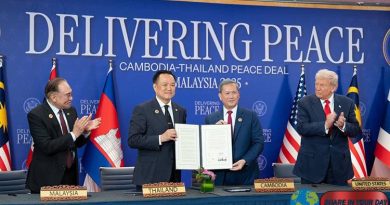Trump Threatens 100% Tariffs as U.S.–China Trade Conflict Intensifies
President Donald Trump announced a sweeping escalation in his trade posture toward China, declaring that beginning November 1, the United States would impose 100 percent tariffs on Chinese exports to the U.S. This move is layered atop existing duties and marks a hard line in an already fraught trade relationship.
Why This Escalation?
Trump cites China’s export controls on critical minerals—vital to the tech and manufacturing sectors—as the catalyst. In retaliation,
he’s also proposing strict import controls on “any and all critical software,” aiming to choke off China’s access to advanced U.S. technologies.
This new round of tariffs would push many Chinese goods into 130 percent tariff territory, once existing duties are factored in. The administration claims this pressure is required to rebalance strategic supply chains.
Flashpoints in the Dispute
- Rare earths and critical minerals: China dominates the global supply chain for many components key to semiconductors, batteries, and tech manufacturing. Its export restrictions have drawn fierce U.S. pushback.
- Summit tensions: Trump had announced a meeting with Xi Jinping at the upcoming APEC summit in South Korea (starting October 31). But following these escalations, he floated canceling that meeting.
- Tariff history and shifts: Earlier this year, the U.S. and China had taken steps toward détente: China reduced tariffs on U.S. exports (e.g. soy), and the U.S. lowered some duties. Now, Trump’s renewed threats signal those efforts may unravel
- Restrictions on technology transfer: Beyond tariffs, the administration has already sought to block exports of key American tech—such as certain Nvidia AI chips—to China.
- Shipping and port countermeasures: In a tit-for-tat escalation, the U.S. announced levies on goods transported via Chinese-operated vessels. China responded with port charges on U.S. ships.
- Agricultural fallout: China’s moratorium on buying U.S. soybeans has hit American farmers, a key demographic Trump has frequently championed.
What’s at Stake
This intensification risks broad economic fallout—not just for the U.S. and China, but globally. Higher consumer prices, disrupted supply chains, and retaliatory measures are likely.
Industries reliant on high-tech materials or components may feel the strain first.
Diplomacy now stands at a crossroads: can either side reverse course, or will the standoff spiral into all-out trade war?





